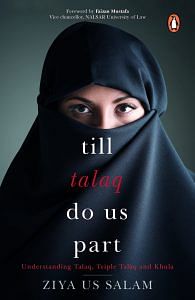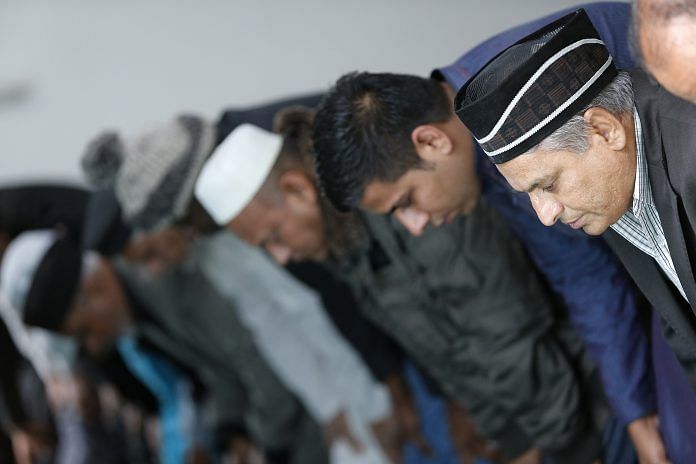In this excerpt from ‘Till Talaq Do Us Part’ author Ziya Us Salam presents a holistic view of how divorce in Islam works.
Far removed from the injunctions of the common Indians, including a significant section of Muslims, believe that instant talaq is the only mode of divorce available under Islam. Popularly, but erroneously, called triple talaq, this way of ending a marriage with the simple utterance of the word ‘talaq’ thrice has often led to an uproar in socio-political circles. Many human rights activists have called it an assault on the dignity of women, who are said to be vulnerable to this form of divorce despite years of wedlock.
Women activists have taken umbrage at this method of divorce, which seems to give men the unbridled power to end years of matrimony at the snap of a finger. It makes women vulnerable to a man’s mood swings, loss of temper or burst of ego. A man might lose his temper, but the woman pays the price. While marriage is a two-way contract, instant talaq, the way it often takes shape in our society, is a unilateral action that leaves women with no scope for dialogue, arbitration or negotiation. The battle waged by the BMMA against triple talaq in the Supreme Court is merely the latest and most visible face of this struggle.
However, over the ages, even the mention of triple talaq has evoked extreme reactions. While conservative maulanas have defended it as a sinful but effective form of divorce, women, in particular, have been vocal against this arbitrary manner of ending a marriage. Not just in 2017–18, but since the 1970s, women have been raising their voice against instant talaq. Around the time Prime Minister Indira Gandhi imposed the Emergency in 1975, two clerics were ostracized and expelled from their cities for daring to consider triple talaq in one sitting as nothing more than a single, revocable divorce.
The first instance came from Calcutta, where Maulana Shafiur Rahman was approached by a quarrelling Bangladeshi couple. The man, Latif, had pronounced ‘talaq, talaq, talaq’ to his wife Hazra. Latif and Hazra had four children, all below the age of eight. Hazra was inclined to put up with his temper for the sake of the children. She herself had no support system. Her poor parents were in Bangladesh and she would have been unable to provide for the kids. She contacted a couple of imams in the city, who expressed helplessness in overruling the husband’s pronouncement. The fact that there was no concept of instant talaq in Bangladesh did not help matters, as according to the local imams, the talaq was pronounced in Calcutta, so the local mores would apply.
Finally, the case was brought before Maulana Shafiur Rahman, who pronounced a brief verdict after Fajr prayers. Taking recourse to the Prophet’s Sunna, wherein he considered multiple pronouncements of talaq in a single sitting as a single, revocable divorce, he declared Latif and Hazra husband and wife. The two resumed cohabitation and went on to have three more children. That did not prevent the couple from being subjected to social ridicule, with many openly asking questions about their marital status.
The maulana too was fiercely criticized by fellow clerics and the common man alike. First, he was stopped from leading the prayers as many men refused to pray behind a man who they thought did not know enough of the scriptures. Next, he was asked to leave the city as his interpretation of the scriptures had caused much dissent even among the ulema. More debate and dissent could do the community no good, it was felt.
Just a little later, Maulana Abdus Sattar was subjected to the ire of Assam’s residents for trying to save the marriage of an Indian man (a local resident) and a Bangladeshi woman. Here too, following triple talaq pronounced in a fit of anger, the marriage was deemed to have ended despite the woman pleading otherwise. Sattar intervened, quoting a Hadith of the Prophet where a case of instant triple talaq was brought before him. The Prophet asked the woman if she agreed to the talaq pronounced by her husband. When the woman answered in the negative, he asked the couple to go home and resume their marital life. Triple talaq pronounced in a single sitting was considered a single, revocable divorce by the Prophet, with the couple going back to their married life. Sattar was subjected to much ridicule and relentless criticism and was forced to temporarily relocate to Calcutta, and then finally to Delhi after a few years.
Incidentally, both Rahman in Calcutta and Sattar in Assam were expected to use the ruling of Caliph Umar to decide the marital status of the complainants. The caliph’s ruling had attained great popularity, and almost total acceptance, among the Muslims in the country, most of whom were followers of Imam Abu Hanifa, who regarded triple talaq in a single sitting as valid. It had a lot to do with the patriarchal ways of our society; women were supposed to live at the beck and call of men and in many ways stay obliged to them for the simple security of matrimony. What better weapon to wield than triple talaq, a simple action that would send their life into a tailspin? So when a couple of clerics ignored this ruling of the caliph, taking recourse to the decisions of the Prophet, a lot of furore followed. Nobody spoke a word against the ruling of the Prophet (equally importantly, nobody followed it either), but many spoke aloud that the caliph could not be wrong either.
 ‘Till Talaq Do Us Part’ by Ziya Us Salam has been published by Penguin Random House. Excerpted with permission from the publisher.
‘Till Talaq Do Us Part’ by Ziya Us Salam has been published by Penguin Random House. Excerpted with permission from the publisher.




DIG Hiranya kr.Bhattacharys basically d pioneer of Foreingers Movements of Assam in 1980’s.His vast practical experience as DIG border abt illegal migrants from Bangladesh cannot be overlook.His book is going 2 be a benchmark 4 coming generation.moon chy